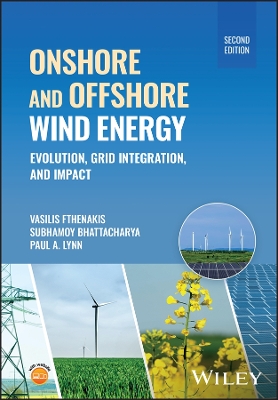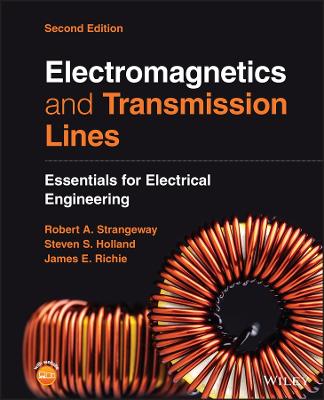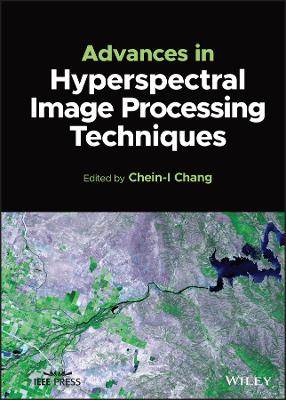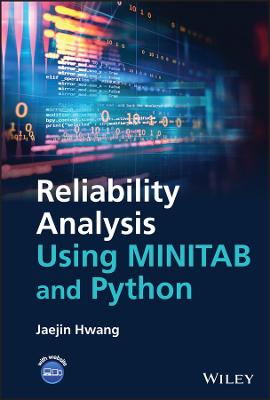Ground Station Design and Analysis for LEO Satellites
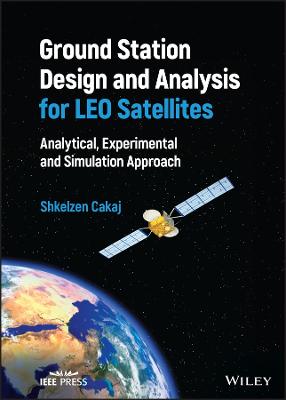 -15%
portes grátis
-15%
portes grátis
Ground Station Design and Analysis for LEO Satellites
Analytical, Experimental and Simulation Approach
Cakaj, Shkelzen
John Wiley & Sons Inc
10/2022
240
Dura
Inglês
9781119899259
15 a 20 dias
666
Descrição não disponível.
Preface x
Acknowledgments xiv
1 LEO Satellite Ground Station Design Concepts 1
1.1 An Overview of LEO Satellites 1
1.2 Satellite System Architecture 4
1.3 The Satellite Ground Station 8
1.4 Ground Station Subsystems 11
1.4.1 Antennas 11
1.4.2 Low Noise Amplifier 11
1.4.3 Converters 12
1.4.4 Safety System 13
1.5 Downlink Budget 14
1.5.1 Error-Performance 15
1.5.2 Received Signal Power 15
1.5.3 Link Budget Analyses 18
1.6 Figure of Merit and System Noise Temperature 19
1.7 Satellite and Ground Station Geometry 25
1.8 LEO MOST Satellite and Ground Stations 29
References 31
2 Rain Attenuation 35
2.1 Rain Attenuation Concepts 35
2.2 Rain Attenuation for LEO Satellite Ground Station 38
2.3 Rain Attenuation Modeling for LEO Satellite Ground Station 41
References 44
3 Downlink Performance 47
3.1 Downlink Performance Definition 47
3.2 Composite Noise Temperature at LEO Satellite Ground Station 47
3.3 Antenna Noise Temperature at LEO Satellite Ground Station 49
3.4 Downlink Performance - Figure of Merit 51
3.5 Downlink Performance: Signal-to-Noise Ratio (S/N) 54
3.6 Downlink and Uplink Antenna Separation 58
3.7 Desensibilization by Uplink Signal at LEO Satellite Ground Station 59
3.8 Downlink and Uplink Frequency Isolation 61
3.9 Sun Noise Measurement at LEO Satellite Ground Station 63
References 69
4 Horizon Plane and Communication Duration 71
4.1 LEO Satellite Tracking Principles 71
4.2 Ideal Horizon Plane and Communication Duration with LEO Satellites 78
4.3 The Range and Horizon Plane Simulation for Ground Stations of LEO Satellites 81
4.4 Practical Horizon Plane for LEO Ground Stations 83
4.5 Real Communication Duration and Designed Horizon Plane Determination 87
4.6 Ideal and Designed Horizon Plane Relation in Space 88
4.7 Savings on Transmit Power through Designed Horizon Plane at LEO Satellite Ground Stations 93
4.8 Elevation Impact on Signal-to-Noise Density Ratio for LEO Satellite Ground Stations 96
References 100
5 LEO Coverage 103
5.1 LEO Coverage Concept 103
5.2 LEO Coverage Geometry 104
5.3 The Coverage of LEO Satellites at Low Elevation 105
5.4 Coverage Belt 107
5.5 LEO Global Coverage 109
5.6 Constellation's Coverage - Starlink Case 113
5.7 Handover-Takeover Process: Geometrical Interpretation and Confirmation 115
References 118
6 LEOs Sun Synchronization 121
6.1 Orbital Sun Synchronization Concept 121
6.2 Orbital Nodal Regression 124
6.3 LEO Sun Synchronization and Inclination Window 127
6.4 Perigee Deviation under Inclination Window for Sun-Synchronized LEOs 129
References 132
7 Launching Process 133
7.1 Introduction to the Launching Process 133
7.2 Injection Velocity and Apogee Simulation from Low Earth Orbits 137
7.3 Hohmann Coplanar Transfer from Low Earth Orbits 141
7.4 The GEO Altitude Attainment and Inclination Alignment 145
7.4.1 Circularization and the Altitude Attainment 147
7.4.2 Inclination Alignment 150
References 151
8 LEO Satellites for Search and Rescue Services 153
8.1 Introduction to LEO Satellites for Search and Rescue Services 153
8.2 SARSAT System 154
8.2.1 SARSAT Space Segment 155
8.2.2 SARSAT Ground Segment 157
8.2.3 Beacons 160
8.3 Doppler Shift 162
8.4 Local User Terminal (LUT) Simulation for LEO Satellites 165
8.5 Missed Passes for SARSAT System 170
8.6 LEOSAR Versus MEOSAR 174
References 178
9 Interference Aspects 181
9.1 General Interference Aspects 181
9.2 Intermodulation Products 183
9.3 Intermodulation by Uplink Signal at LEO Satellite Ground Stations 185
9.4 Modeling of Interference Caused by Uplink Signal for LEO Satellite Ground Stations 189
9.5 Downlink Adjacent Interference for LEO Satellites 193
9.6 Adjacent Satellites Interference (Identification/Avoiding) 195
9.6.1 Adjacent Interference Identification and Duration Interval 198
9.7 Modulation Index Application for Downlink Interference Identification 200
9.7.1 Simulation Approach of Interference Events and Timelines 202
9.8 Uplink Interference Identification for LEO Search and Rescue Satellites 205
References 207
10 Two More Challenges 209
10.1 Introduction to the Two Challenges 209
10.2 Downlink Free Space Loss Compensation 209
10.3 Horizon Plane Width: New Parameter for LEO Satellite Ground Station Geometry 214
References 217
11 Closing Remarks 219
References 222
Index 224
Acknowledgments xiv
1 LEO Satellite Ground Station Design Concepts 1
1.1 An Overview of LEO Satellites 1
1.2 Satellite System Architecture 4
1.3 The Satellite Ground Station 8
1.4 Ground Station Subsystems 11
1.4.1 Antennas 11
1.4.2 Low Noise Amplifier 11
1.4.3 Converters 12
1.4.4 Safety System 13
1.5 Downlink Budget 14
1.5.1 Error-Performance 15
1.5.2 Received Signal Power 15
1.5.3 Link Budget Analyses 18
1.6 Figure of Merit and System Noise Temperature 19
1.7 Satellite and Ground Station Geometry 25
1.8 LEO MOST Satellite and Ground Stations 29
References 31
2 Rain Attenuation 35
2.1 Rain Attenuation Concepts 35
2.2 Rain Attenuation for LEO Satellite Ground Station 38
2.3 Rain Attenuation Modeling for LEO Satellite Ground Station 41
References 44
3 Downlink Performance 47
3.1 Downlink Performance Definition 47
3.2 Composite Noise Temperature at LEO Satellite Ground Station 47
3.3 Antenna Noise Temperature at LEO Satellite Ground Station 49
3.4 Downlink Performance - Figure of Merit 51
3.5 Downlink Performance: Signal-to-Noise Ratio (S/N) 54
3.6 Downlink and Uplink Antenna Separation 58
3.7 Desensibilization by Uplink Signal at LEO Satellite Ground Station 59
3.8 Downlink and Uplink Frequency Isolation 61
3.9 Sun Noise Measurement at LEO Satellite Ground Station 63
References 69
4 Horizon Plane and Communication Duration 71
4.1 LEO Satellite Tracking Principles 71
4.2 Ideal Horizon Plane and Communication Duration with LEO Satellites 78
4.3 The Range and Horizon Plane Simulation for Ground Stations of LEO Satellites 81
4.4 Practical Horizon Plane for LEO Ground Stations 83
4.5 Real Communication Duration and Designed Horizon Plane Determination 87
4.6 Ideal and Designed Horizon Plane Relation in Space 88
4.7 Savings on Transmit Power through Designed Horizon Plane at LEO Satellite Ground Stations 93
4.8 Elevation Impact on Signal-to-Noise Density Ratio for LEO Satellite Ground Stations 96
References 100
5 LEO Coverage 103
5.1 LEO Coverage Concept 103
5.2 LEO Coverage Geometry 104
5.3 The Coverage of LEO Satellites at Low Elevation 105
5.4 Coverage Belt 107
5.5 LEO Global Coverage 109
5.6 Constellation's Coverage - Starlink Case 113
5.7 Handover-Takeover Process: Geometrical Interpretation and Confirmation 115
References 118
6 LEOs Sun Synchronization 121
6.1 Orbital Sun Synchronization Concept 121
6.2 Orbital Nodal Regression 124
6.3 LEO Sun Synchronization and Inclination Window 127
6.4 Perigee Deviation under Inclination Window for Sun-Synchronized LEOs 129
References 132
7 Launching Process 133
7.1 Introduction to the Launching Process 133
7.2 Injection Velocity and Apogee Simulation from Low Earth Orbits 137
7.3 Hohmann Coplanar Transfer from Low Earth Orbits 141
7.4 The GEO Altitude Attainment and Inclination Alignment 145
7.4.1 Circularization and the Altitude Attainment 147
7.4.2 Inclination Alignment 150
References 151
8 LEO Satellites for Search and Rescue Services 153
8.1 Introduction to LEO Satellites for Search and Rescue Services 153
8.2 SARSAT System 154
8.2.1 SARSAT Space Segment 155
8.2.2 SARSAT Ground Segment 157
8.2.3 Beacons 160
8.3 Doppler Shift 162
8.4 Local User Terminal (LUT) Simulation for LEO Satellites 165
8.5 Missed Passes for SARSAT System 170
8.6 LEOSAR Versus MEOSAR 174
References 178
9 Interference Aspects 181
9.1 General Interference Aspects 181
9.2 Intermodulation Products 183
9.3 Intermodulation by Uplink Signal at LEO Satellite Ground Stations 185
9.4 Modeling of Interference Caused by Uplink Signal for LEO Satellite Ground Stations 189
9.5 Downlink Adjacent Interference for LEO Satellites 193
9.6 Adjacent Satellites Interference (Identification/Avoiding) 195
9.6.1 Adjacent Interference Identification and Duration Interval 198
9.7 Modulation Index Application for Downlink Interference Identification 200
9.7.1 Simulation Approach of Interference Events and Timelines 202
9.8 Uplink Interference Identification for LEO Search and Rescue Satellites 205
References 207
10 Two More Challenges 209
10.1 Introduction to the Two Challenges 209
10.2 Downlink Free Space Loss Compensation 209
10.3 Horizon Plane Width: New Parameter for LEO Satellite Ground Station Geometry 214
References 217
11 Closing Remarks 219
References 222
Index 224
Este título pertence ao(s) assunto(s) indicados(s). Para ver outros títulos clique no assunto desejado.
LEO satellites; orbit; satellite constellation; uplink; downlink; free space loss; link budget; antenna gain; satellite ground station; ground station performance; rain attenuation; system noise temperature; figure of merit; horizon plane; communication duration; coverage; global coverage; nodal regression; sun synchronization; inclination window; perigee deviation; search and rescue satellites; Doppler shift; local user terminals; satellite launching; intermodulation interference; modulation index; satellite-terrestrial integrated network
Preface x
Acknowledgments xiv
1 LEO Satellite Ground Station Design Concepts 1
1.1 An Overview of LEO Satellites 1
1.2 Satellite System Architecture 4
1.3 The Satellite Ground Station 8
1.4 Ground Station Subsystems 11
1.4.1 Antennas 11
1.4.2 Low Noise Amplifier 11
1.4.3 Converters 12
1.4.4 Safety System 13
1.5 Downlink Budget 14
1.5.1 Error-Performance 15
1.5.2 Received Signal Power 15
1.5.3 Link Budget Analyses 18
1.6 Figure of Merit and System Noise Temperature 19
1.7 Satellite and Ground Station Geometry 25
1.8 LEO MOST Satellite and Ground Stations 29
References 31
2 Rain Attenuation 35
2.1 Rain Attenuation Concepts 35
2.2 Rain Attenuation for LEO Satellite Ground Station 38
2.3 Rain Attenuation Modeling for LEO Satellite Ground Station 41
References 44
3 Downlink Performance 47
3.1 Downlink Performance Definition 47
3.2 Composite Noise Temperature at LEO Satellite Ground Station 47
3.3 Antenna Noise Temperature at LEO Satellite Ground Station 49
3.4 Downlink Performance - Figure of Merit 51
3.5 Downlink Performance: Signal-to-Noise Ratio (S/N) 54
3.6 Downlink and Uplink Antenna Separation 58
3.7 Desensibilization by Uplink Signal at LEO Satellite Ground Station 59
3.8 Downlink and Uplink Frequency Isolation 61
3.9 Sun Noise Measurement at LEO Satellite Ground Station 63
References 69
4 Horizon Plane and Communication Duration 71
4.1 LEO Satellite Tracking Principles 71
4.2 Ideal Horizon Plane and Communication Duration with LEO Satellites 78
4.3 The Range and Horizon Plane Simulation for Ground Stations of LEO Satellites 81
4.4 Practical Horizon Plane for LEO Ground Stations 83
4.5 Real Communication Duration and Designed Horizon Plane Determination 87
4.6 Ideal and Designed Horizon Plane Relation in Space 88
4.7 Savings on Transmit Power through Designed Horizon Plane at LEO Satellite Ground Stations 93
4.8 Elevation Impact on Signal-to-Noise Density Ratio for LEO Satellite Ground Stations 96
References 100
5 LEO Coverage 103
5.1 LEO Coverage Concept 103
5.2 LEO Coverage Geometry 104
5.3 The Coverage of LEO Satellites at Low Elevation 105
5.4 Coverage Belt 107
5.5 LEO Global Coverage 109
5.6 Constellation's Coverage - Starlink Case 113
5.7 Handover-Takeover Process: Geometrical Interpretation and Confirmation 115
References 118
6 LEOs Sun Synchronization 121
6.1 Orbital Sun Synchronization Concept 121
6.2 Orbital Nodal Regression 124
6.3 LEO Sun Synchronization and Inclination Window 127
6.4 Perigee Deviation under Inclination Window for Sun-Synchronized LEOs 129
References 132
7 Launching Process 133
7.1 Introduction to the Launching Process 133
7.2 Injection Velocity and Apogee Simulation from Low Earth Orbits 137
7.3 Hohmann Coplanar Transfer from Low Earth Orbits 141
7.4 The GEO Altitude Attainment and Inclination Alignment 145
7.4.1 Circularization and the Altitude Attainment 147
7.4.2 Inclination Alignment 150
References 151
8 LEO Satellites for Search and Rescue Services 153
8.1 Introduction to LEO Satellites for Search and Rescue Services 153
8.2 SARSAT System 154
8.2.1 SARSAT Space Segment 155
8.2.2 SARSAT Ground Segment 157
8.2.3 Beacons 160
8.3 Doppler Shift 162
8.4 Local User Terminal (LUT) Simulation for LEO Satellites 165
8.5 Missed Passes for SARSAT System 170
8.6 LEOSAR Versus MEOSAR 174
References 178
9 Interference Aspects 181
9.1 General Interference Aspects 181
9.2 Intermodulation Products 183
9.3 Intermodulation by Uplink Signal at LEO Satellite Ground Stations 185
9.4 Modeling of Interference Caused by Uplink Signal for LEO Satellite Ground Stations 189
9.5 Downlink Adjacent Interference for LEO Satellites 193
9.6 Adjacent Satellites Interference (Identification/Avoiding) 195
9.6.1 Adjacent Interference Identification and Duration Interval 198
9.7 Modulation Index Application for Downlink Interference Identification 200
9.7.1 Simulation Approach of Interference Events and Timelines 202
9.8 Uplink Interference Identification for LEO Search and Rescue Satellites 205
References 207
10 Two More Challenges 209
10.1 Introduction to the Two Challenges 209
10.2 Downlink Free Space Loss Compensation 209
10.3 Horizon Plane Width: New Parameter for LEO Satellite Ground Station Geometry 214
References 217
11 Closing Remarks 219
References 222
Index 224
Acknowledgments xiv
1 LEO Satellite Ground Station Design Concepts 1
1.1 An Overview of LEO Satellites 1
1.2 Satellite System Architecture 4
1.3 The Satellite Ground Station 8
1.4 Ground Station Subsystems 11
1.4.1 Antennas 11
1.4.2 Low Noise Amplifier 11
1.4.3 Converters 12
1.4.4 Safety System 13
1.5 Downlink Budget 14
1.5.1 Error-Performance 15
1.5.2 Received Signal Power 15
1.5.3 Link Budget Analyses 18
1.6 Figure of Merit and System Noise Temperature 19
1.7 Satellite and Ground Station Geometry 25
1.8 LEO MOST Satellite and Ground Stations 29
References 31
2 Rain Attenuation 35
2.1 Rain Attenuation Concepts 35
2.2 Rain Attenuation for LEO Satellite Ground Station 38
2.3 Rain Attenuation Modeling for LEO Satellite Ground Station 41
References 44
3 Downlink Performance 47
3.1 Downlink Performance Definition 47
3.2 Composite Noise Temperature at LEO Satellite Ground Station 47
3.3 Antenna Noise Temperature at LEO Satellite Ground Station 49
3.4 Downlink Performance - Figure of Merit 51
3.5 Downlink Performance: Signal-to-Noise Ratio (S/N) 54
3.6 Downlink and Uplink Antenna Separation 58
3.7 Desensibilization by Uplink Signal at LEO Satellite Ground Station 59
3.8 Downlink and Uplink Frequency Isolation 61
3.9 Sun Noise Measurement at LEO Satellite Ground Station 63
References 69
4 Horizon Plane and Communication Duration 71
4.1 LEO Satellite Tracking Principles 71
4.2 Ideal Horizon Plane and Communication Duration with LEO Satellites 78
4.3 The Range and Horizon Plane Simulation for Ground Stations of LEO Satellites 81
4.4 Practical Horizon Plane for LEO Ground Stations 83
4.5 Real Communication Duration and Designed Horizon Plane Determination 87
4.6 Ideal and Designed Horizon Plane Relation in Space 88
4.7 Savings on Transmit Power through Designed Horizon Plane at LEO Satellite Ground Stations 93
4.8 Elevation Impact on Signal-to-Noise Density Ratio for LEO Satellite Ground Stations 96
References 100
5 LEO Coverage 103
5.1 LEO Coverage Concept 103
5.2 LEO Coverage Geometry 104
5.3 The Coverage of LEO Satellites at Low Elevation 105
5.4 Coverage Belt 107
5.5 LEO Global Coverage 109
5.6 Constellation's Coverage - Starlink Case 113
5.7 Handover-Takeover Process: Geometrical Interpretation and Confirmation 115
References 118
6 LEOs Sun Synchronization 121
6.1 Orbital Sun Synchronization Concept 121
6.2 Orbital Nodal Regression 124
6.3 LEO Sun Synchronization and Inclination Window 127
6.4 Perigee Deviation under Inclination Window for Sun-Synchronized LEOs 129
References 132
7 Launching Process 133
7.1 Introduction to the Launching Process 133
7.2 Injection Velocity and Apogee Simulation from Low Earth Orbits 137
7.3 Hohmann Coplanar Transfer from Low Earth Orbits 141
7.4 The GEO Altitude Attainment and Inclination Alignment 145
7.4.1 Circularization and the Altitude Attainment 147
7.4.2 Inclination Alignment 150
References 151
8 LEO Satellites for Search and Rescue Services 153
8.1 Introduction to LEO Satellites for Search and Rescue Services 153
8.2 SARSAT System 154
8.2.1 SARSAT Space Segment 155
8.2.2 SARSAT Ground Segment 157
8.2.3 Beacons 160
8.3 Doppler Shift 162
8.4 Local User Terminal (LUT) Simulation for LEO Satellites 165
8.5 Missed Passes for SARSAT System 170
8.6 LEOSAR Versus MEOSAR 174
References 178
9 Interference Aspects 181
9.1 General Interference Aspects 181
9.2 Intermodulation Products 183
9.3 Intermodulation by Uplink Signal at LEO Satellite Ground Stations 185
9.4 Modeling of Interference Caused by Uplink Signal for LEO Satellite Ground Stations 189
9.5 Downlink Adjacent Interference for LEO Satellites 193
9.6 Adjacent Satellites Interference (Identification/Avoiding) 195
9.6.1 Adjacent Interference Identification and Duration Interval 198
9.7 Modulation Index Application for Downlink Interference Identification 200
9.7.1 Simulation Approach of Interference Events and Timelines 202
9.8 Uplink Interference Identification for LEO Search and Rescue Satellites 205
References 207
10 Two More Challenges 209
10.1 Introduction to the Two Challenges 209
10.2 Downlink Free Space Loss Compensation 209
10.3 Horizon Plane Width: New Parameter for LEO Satellite Ground Station Geometry 214
References 217
11 Closing Remarks 219
References 222
Index 224
Este título pertence ao(s) assunto(s) indicados(s). Para ver outros títulos clique no assunto desejado.
LEO satellites; orbit; satellite constellation; uplink; downlink; free space loss; link budget; antenna gain; satellite ground station; ground station performance; rain attenuation; system noise temperature; figure of merit; horizon plane; communication duration; coverage; global coverage; nodal regression; sun synchronization; inclination window; perigee deviation; search and rescue satellites; Doppler shift; local user terminals; satellite launching; intermodulation interference; modulation index; satellite-terrestrial integrated network


